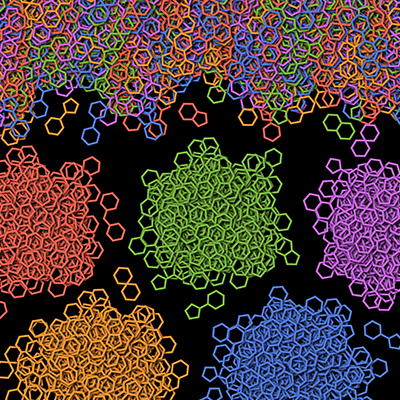March 22, 2021 -- A type of gene therapy using transcription factors to target DNA has been shown to dramatically reduce levels of the harmful protein tau in preclinical mouse models of Alzheimer's disease. The findings, published in Science Advances on March 19, suggest that the therapy could easily translate to the clinic and be effective in humans.
Alzheimer's disease is characterized by the formation of tau tangles and amyloid plaques, resulting in loss of brain function. Accumulation and aggregation in the brain of tau, a microtubule-binding protein, causes synaptic and neuronal loss, as well as cognitive decline associated with Alzheimer's disease.
Mice engineered to lack expression of the microtubule associated protein tau (MAPT) gene have been shown to be protected against beta-amyloid-induced toxicities. Furthermore, reducing transgenic tau expression has been shown to reverse the pathological effects of tau. This evidence supports the idea that a reduction in tau protein could be a therapeutic approach to treating Alzheimer's disease.
In the current study, investigators from Massachusetts General Hospital and Sangamo Therapeutics used recombinant adeno-associated viruses (rAAVs) as viral vectors to down-regulate the expression of endogenous tau in a single viral administration. The AAVs encode engineered zinc finger protein (ZFP) arrays that precisely target a short region of the genomic mouse MAPT sequence and down-regulate MAPT gene expression through fusion to the Krueppel-associated box (KRAB) repression domain of the human KOX1 transcription factor.
The team designed ZFPs, based on the backbone of human transcription factors, that target sequences within 500 base pairs of the transcription start site (TSS) of the mouse tau gene MAPT. Specifically, the ZFP mediates the site-specific binding to the DNA, and the KRAB domain represses the endogenous expression of MAPT.
The authors noted that this gene therapy approach circumvents off-target effects and preexisting immunity issues associated with gene editing strategies such as CRISPR-Cas9 or transcription activator-like effector nuclease (TALEN)-based approaches.
To explore if the gene therapy could reduce tau locally in the hippocampus, a brain region that is specifically affected by tau pathology in neurodegenerative diseases, the researchers used two strategies. First, they intracranially injected the adeno-associated virus serotype 9 (AAV9)-based therapy into mice to observe messenger RNA (mRNA) levels within the brain. They also used intravenous delivery of blood-brain barrier-crossing AAV-PHP.B to explore brain-wide tau reduction in mice.
At six weeks post intracranial infection, the team measured tau mRNA levels by reverse transcription quantitative polymerase chain reaction (RT-qPCR) and tau protein levels by Western blot. The team found that a single AAV administration was sufficient to repress tau mRNA and all isoforms of the protein by 50% to 80% in the brain for 11 months (the length of the study). They observed no neuroinflammation or neurotoxicity associated with the therapy.
Next, the researchers combined the AAV9 PHP.B system with their tau-targeted ZFP-transcription factors to achieve brain-wide long-term tau repression in the adult mouse brain. They found that tau knockdown could be induced with a single systemic injection of AAVs, without a direct brain intervention. Using qPCR and enzyme-linked immunosorbent assay (ELISA), they observed a rapid reduction of tau mRNA levels up to 50% in multiple regions of the brain, which were sustained for up to 24 weeks. Moreover, they found little accumulation of the ZFP-transcription factor transcripts in peripheral tissues.
"The technology worked just the way we had hoped -- reducing tau substantially for as long as we looked, causing no side effects that we could see even over many, many months, and improving the pathological changes in the brains of the animals," said senior author Dr. Bradley Hyman, PhD, who directs the Alzheimer's disease research unit at the MassGeneral Institute for Neurodegenerative Disease, in a statement. "This suggests a plan forward to try to help patients."
To see if the model could protect against amyloid beta-induced toxicity in mice, the team used tau-targeted ZFP-transcription factors to treat neurodegeneration with an in vivo mouse model. They injected AAV-PHP.B with ZFP-transcription factor therapy into mice that produce human amyloid-beta peptide and develop amyloid plaques in the cortex and hippocampus. There was around a 30% decrease in central nervous system tau in the adult brain. They observed that this repression of endogenous tau appeared to protect neurons from toxicity in mice with Alzheimer's disease-like amyloid beta pathology.
"This was the result of a single treatment of gene regulation therapy, which could be given by an injection into the bloodstream," Hyman said. "While this therapy is far from patients--as much more development and safety testing would need to be done--it is a promising and exciting first step."
Copyright © 2021 scienceboard.net








